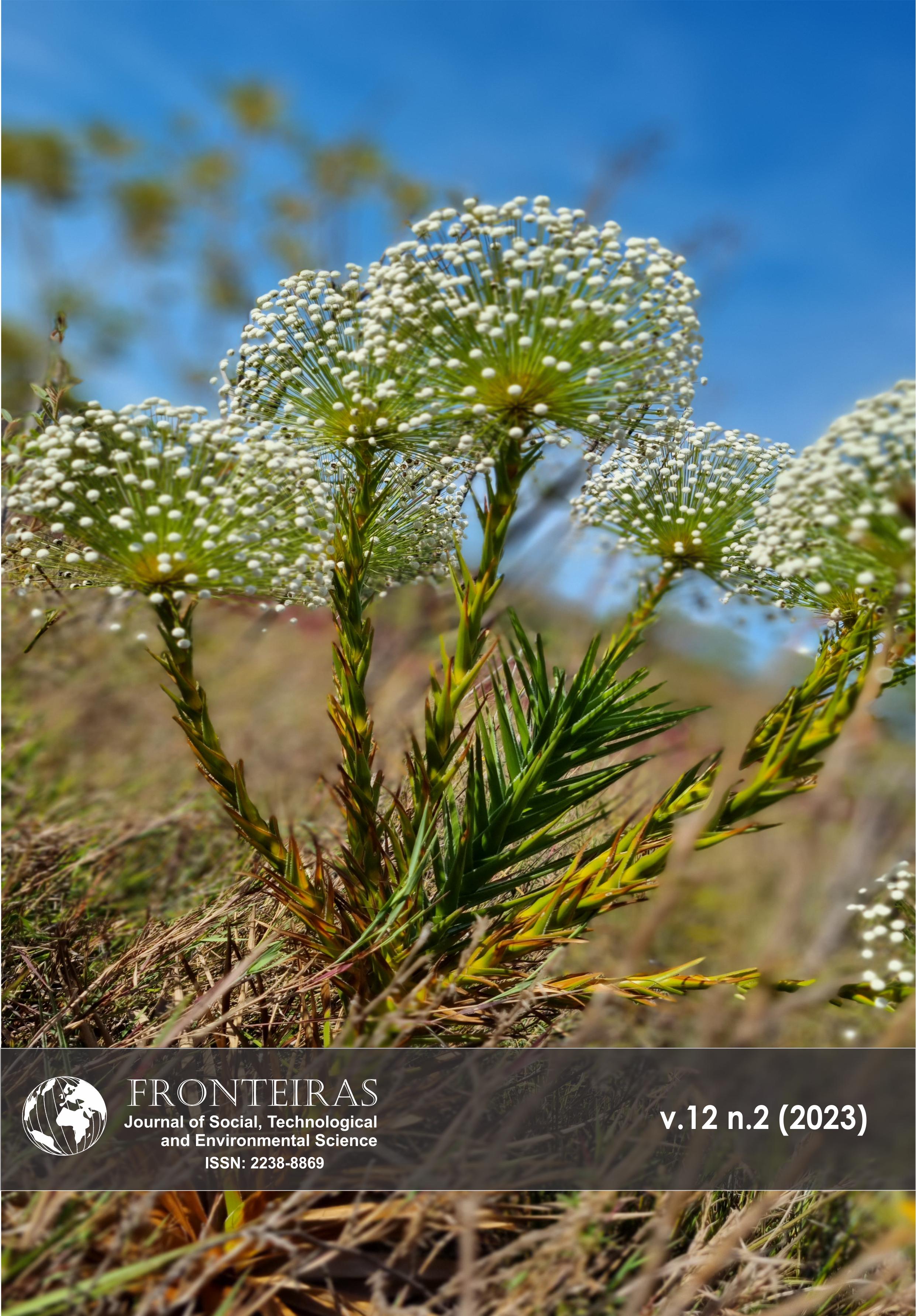The Importance of Meliponiculture in Urban Centers as a Tool for Environmental Education
DOI:
https://doi.org/10.21664/2238-8869.2023v12i2.p191-201Keywords:
stingless bees, sustainability, metropolis, urban agroecologyAbstract
Meliponians are species popularly known as stingless bees. This natural attraction generated by the reduction of risks in the management added to the great variety of species, makes meliponiculture a potential alternative, combined with environmental education to inform and sensitize new audiences, whether they are close to the subject or not. For this, it was necessary to survey the literature on meliponiculture and in Brazil, the products derived from stingless bees, stingless bees in cities and if they bring benefits and the importance of environmental education combined with meliponiculture. Based on this information, a semi-structured questionnaire with 10 closed and two open questions was prepared and published. The sample showed a female profile, aged between 19 and 40 years, from the southeast region, from an urban area, with higher education than high school, with greater participation, bringing experiences, opinions and a lot of interest in learning more about the subject.
References
BARREIRAS, Diego Groto et al. Eficácia da ação antimicrobiana do extrato de própolis de abelha jataí (Tetragonisca angustula) em bactérias Gram-positivas e Gram-negativas. Caderno de Ciências Agrárias, [s. l.], v. 12, p. 1–5, 2020. Disponível em: https://periodicos.ufmg.br/index.php/ccaufmg/article/view/15939. Acesso em: 26 maio 2022.
CAIRES, Stephanie Castro; BARCELOS, Denise. Colapso das abelhas: Possíveis causas e consequências do seu desaparecimento na natureza. ACTA Apicola Brasilica, [s. l.], v. 5, n. 1, p. 11–15, 2017. Disponível em: https://www.gvaa.com.br/revista/index.php/APB/article/view/5294. Acesso em: 5 ago. 2022.
COSTA, Barbara Regina Lopes. Bola de Neve Virtual: O Uso das Redes Sociais Virtuais no Processo de Coleta de Dados de uma Pesquisa Científica. Revista Interdisciplinar de Gestão Social, [s. l.], v. 7, n. 1, p. 15–37, 2018. Disponível em: https://periodicos.ufba.br/index.php/rigs/article/view/24649. Acesso em: 3 ago. 2022.
FREITAS, Breno Magalhães. MELIPONÍNEOS. Fortaleza-CEUniversidade Federal do Ceará, , 2003.
FUNBIO. Agrotóxicos e polinizadores: isso combina? Rio de Janeiro - RJ: Fundo Brasileiro para Biodiversidade, 2014. Disponível em: http://www.semabelhasemalimento.com.br/wp-content/uploads/2015/02/GEF-Agrotoxicos_BAIXA.pdf. Acesso em: 5 ago. 2022.
HALL, Damon M. et al. The city as a refuge for insect pollinators. Conservation Biology, [s. l.], v. 31, n. 1, p. 24–29, 2017. Disponível em: https://onlinelibrary.wiley.com/doi/abs/10.1111/cobi.12840. Acesso em: 2 jun. 2022.
HIPÓLITO, Juliana et al. Valuing nature’s contribution to people: The pollination services provided by two protected areas in Brazil. Global Ecology and Conservation, [s. l.], v. 20, p. e00782, 2019. Disponível em: https://www.sciencedirect.com/science/article/pii/S2351989419301611. Acesso em: 9 jun. 2022.
KERR, Warwick Estevam; CARVALHO, Gislene Almeida; SILVA, Alexandre Coletto Da. Aspectos pouco mencionados da biodiversidade amazônica. [s. l.], p. 22, 2001.
NOGUEIRA NETO, Paulo. Vida e criação de abelhas indígenas sem ferrão. São Paulo: Editora Nogueirapis, 1997.
PEDRO, Silvia R. M. The Stingless Bee Fauna In Brazil (Hymenoptera: Apidae). Sociobiology, [s. l.], v. 61, n. 4, p. 348–354, 2014. Disponível em: http://periodicos.uefs.br/index.php/sociobiology/article/view/699. Acesso em: 26 maio 2022.
QUEIROZ, Ana Carolina Martins de. Ações de educação ambiental em meliponicultura. - Portal Embrapa. [s. l.], 2017. Disponível em: https://www.embrapa.br/busca-de-publicacoes/-/publicacao/1085682/acoes-de-educacao-ambiental-em-meliponicultura. Acesso em: 2 jun. 2022.
SILVA, Renan do Carmo Marinho; TORRE, Priscila Aparecida Della; MATOS, Janara de Camargo. O uso incorreto do inseticida fipronil e sua influência na morte das abelhas no sul do Brasil. Revista Processando o Saber, [s. l.], v. 13, p. 93–110, 2021. Disponível em: https://fatecpg.edu.br/revista/index.php/ps. Acesso em: 5 ago. 2022.
TAVARES, Daiana Antonia et al. Exposure to thiamethoxam during the larval phase affects synapsin levels in the brain of the honey bee. Ecotoxicology and Environmental Safety, [s. l.], v. 169, p. 523–528, 2019. Disponível em: https://www.sciencedirect.com/science/article/pii/S0147651318311849. Acesso em: 5 ago. 2022.
VIEIRA, Fernanda Rodrigues; ANDRADE, Daniel Caixeta; RIBEIRO, Francis Lee. A polinização por abelhas sob a perspectiva da Abordagem de Serviços Ecossistêmicos (ASE). Revista Ibero-Americana de Ciências Ambientais, [s. l.], v. 12, n. 4, p. 544–560, 2021. Disponível em: http://sustenere.co/index.php/rica/article/view/CBPC2179-6858.2021.004.0042. Acesso em: 2 jun. 2022.
YIN, Robert K.; SILVA, Dirceu da; BUENO, Daniel. Pesquisa Qualitativa do Início ao Fim. 1a ediçãoed. Porto Alegre: Penso, 2016.
Downloads
Published
How to Cite
Issue
Section
License
This journal offers immediate free access to its content, following the principle that providing free scientific knowledge to the public, we provides greater global democratization of knowledge.
As of the publication in the journal the authors have copyright and publication rights of their articles without restrictions.
The Revista Fronteiras: Journal of Social, Technological and Environmental Science follows the legal precepts of the Creative Commons - Attribution-NonCommercial-ShareAlike 4.0 International. 


